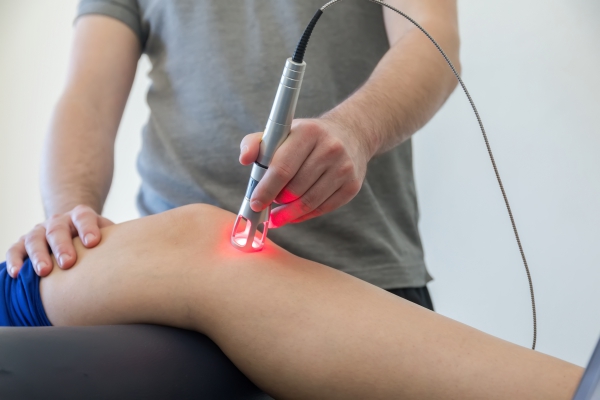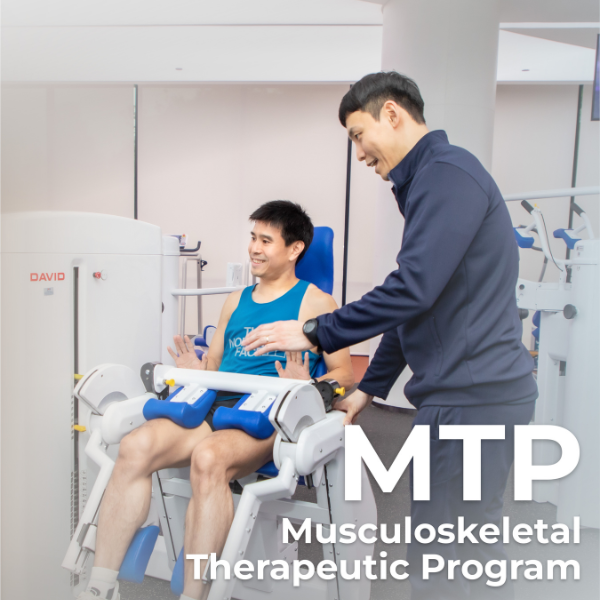Treating ‘Knee Osteoarthritis’ without a surgery
If you aren’t the one who is experiencing knee pain, it’s not hard to find a family member, a relative or a friend who struggles to get around with bad knees. It’s not a fun day out anymore when getting up or getting out of a car is a challenge. Let's try to understand what osteoarthritis is, and how it can be treated.
Knee Osteoarthritis is the condition of the cartilage area of the knee, which is responsible for the impact and friction, is injured or torn. This leads to pain, swelling, warmth and stiffness in the knee joints. You may find yourself difficult to move or unable to stand up or start to hear the noise coming from your joints. It can potentially lead to deformity of the knee joints.
Who are the risk groups for osteoarthritis?
- Aged over 45 years old, more often found in women than men.
- Overweight with BMI above 25.
- Those whose work or regular activities involves putting pressure to the knees such as squat position, sitting cross-legged, sitting on the floor with legs to the side or lifting heavy objects. Anyone who is involved in activities that have a long and frequent damaging impact on the knees, such as running a marathon, soccer player, etc.
- Those who have other arthritis, such as rheumatoid arthritis or gout.
How can knee osteoarthritis be treated?
Knee osteoarthritis treatment can be done with various supportive treatments or surgery, in cases where supportive treatment is ineffective.
Supportive treatment starts by addressing the root cause by avoiding all the risk factors that can cause osteoarthritis as much as possible, such as losing weight, avoiding heavy knee-bending activities, refrain from going up and down the stairs several times a day to control the inflammation of other arthritis. Then, the patient needs correct and consistent exercise to strengthen muscles on the front and the back of the knees. The exercise allows these muscles to provide support to the knees and reduce the impact. If the pain is severe, painkillers and anti-inflammatory drugs can be used for a short time. However, drugs are not a long-term treatment due to its potential side effects, such as high blood pressure, kidney failure and gastrointestinal bleeding.
If medical side effects are your concern, physical therapy can be a good way to reduce pain and increase joint movement. Physical treatment dry needling, laser pain relief (High Power Laser Therapy) and heat therapy should be considered.

In addition to those treatments, artificial joint injection is one another option. The treatment includes injecting lubricating substance that is produced to mimic the natural knee joints in order to reduce the impact and improve the movement. Artificial joint injection slows down the deterioration and stimulates the joint surface to repair itself and greatly reduce the creaky noise your joints make!
Over one course of treatment after injecting the lubricating substance to support the knee joints, the effects of the drug can last for 6 months to 1 year, with almost no side effects from injection. The treatment is suitable for patients with osteoarthritis in the early stages onwards. If not many symptoms are shown, you may consider opting for joint nourishing supplements, like glucosamine, chondroitin sulfate or type II collagen. These supplements can reduce symptoms of osteoarthritis and slow down the deterioration of the knee with mild side effects. However, people who already have been taking many types of drugs for other diseases should avoid taking these supplements.
If you have knee pain or are wondering if you have osteoarthritis, feel free to visit your local doctor or seek medical advice and get yourself the right treatment. Seeing a doctor in early stages can prevent the disease from spreading. Remember, the sooner you get treated the longer those healthy knees can stay with you.
Reference
- Hsu H, Siwiec RM. Knee osteoarthritis. 2019.
- David Zelman, MD. Osteoarthritis of the Knee (Degenerative Arthritis of the Knee) [Internet]. WebMD; 2019 [cited 2020 Sep 15]. Available from: https://www.webmd.com/osteoarthritis/ostearthritis-of-the-knee-degenerative-arthritis-of-the-knee
Recommended Packages & Promotions

 คลินิกสร้างเสริมและฟื้นฟูระบบกล้ามเนื้อและกระดูก
คลินิกสร้างเสริมและฟื้นฟูระบบกล้ามเนื้อและกระดูก
ฟื้นฟูสุขภาพ ป้องกันออฟฟิศซินโดรม ด้วยโปรแกรมออกกำลังกายเฉพาะบุคคล โดยทีมแพทย์ผู้เชี่ยวชาญ...




.jpg)
